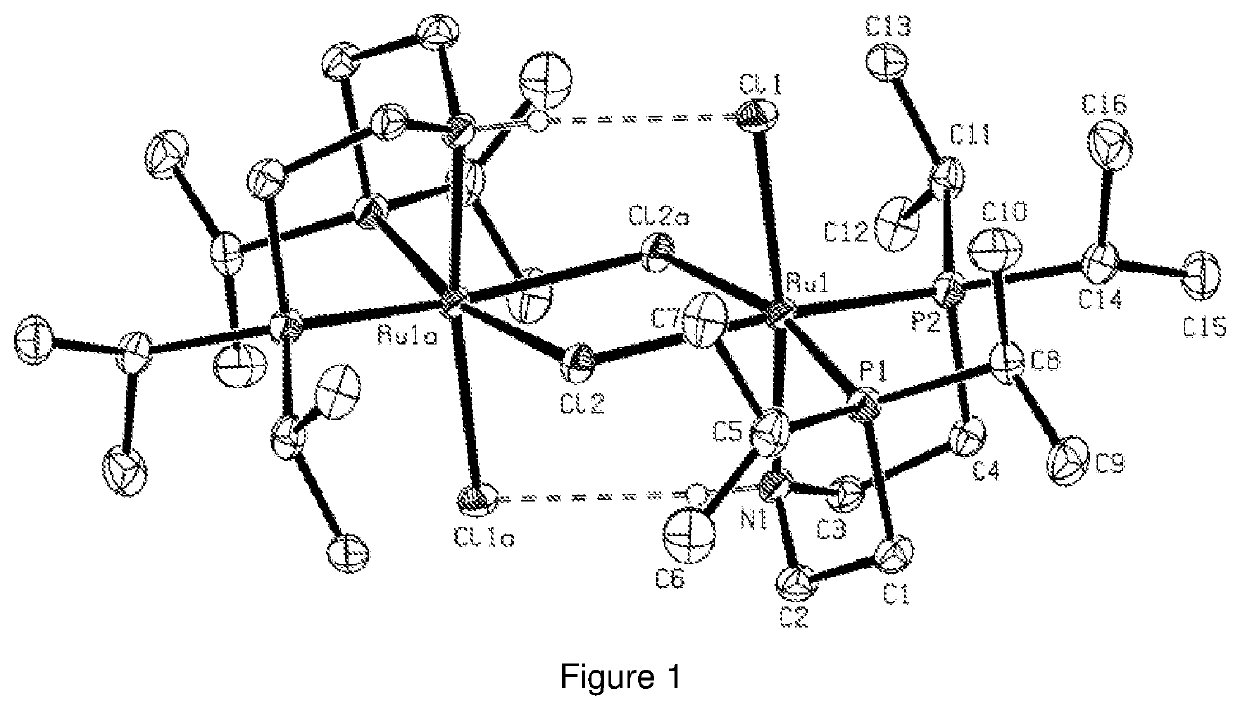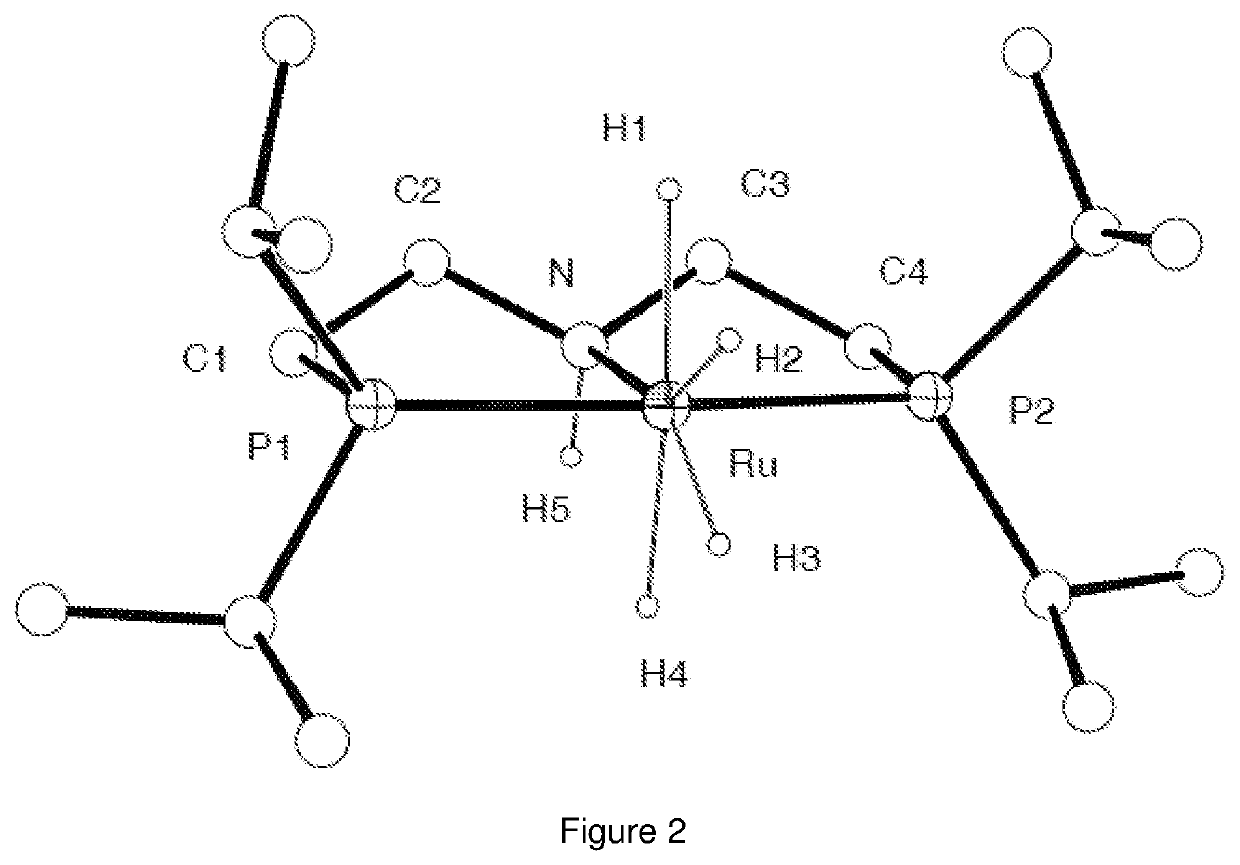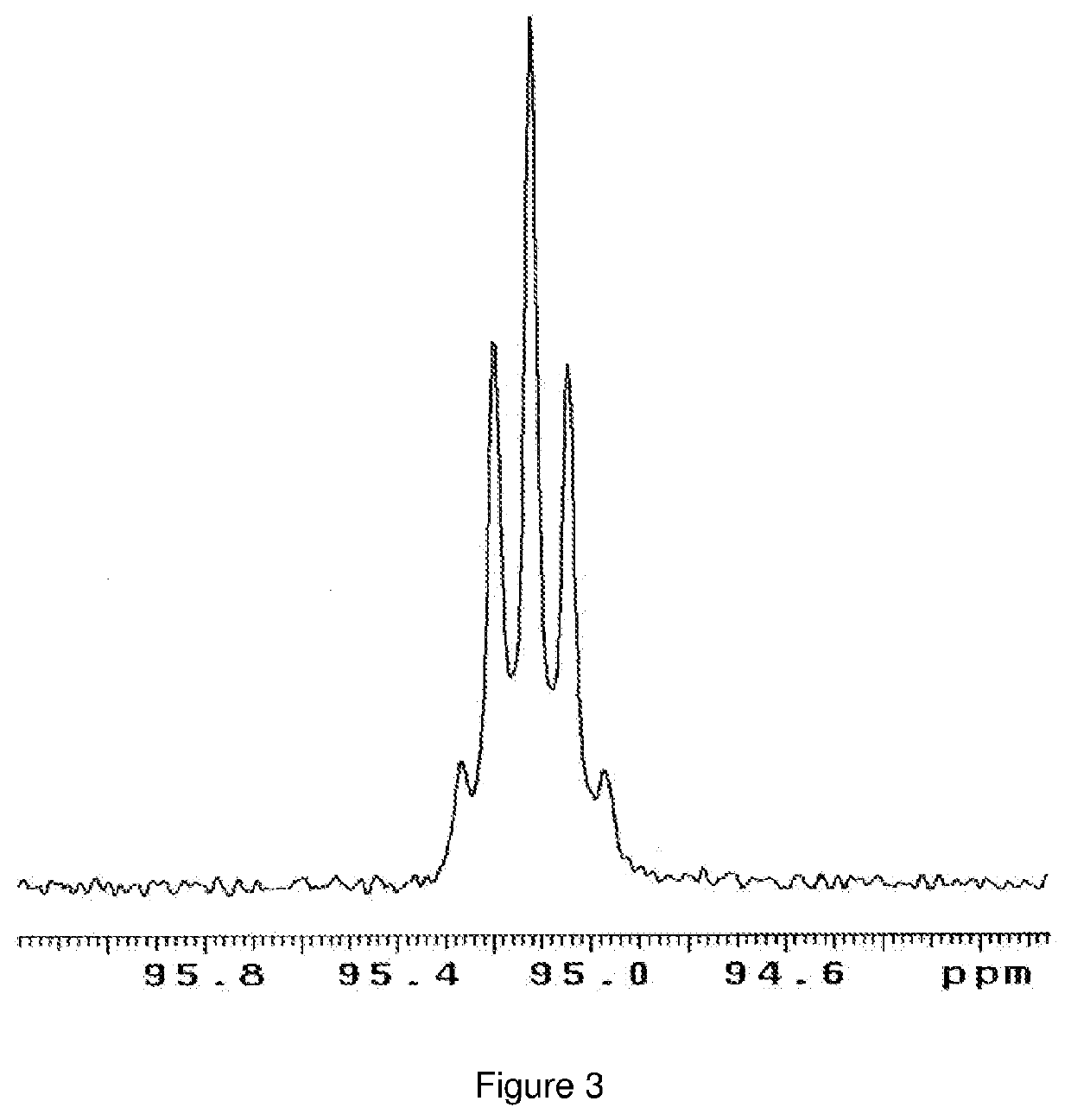Catalytic conversion of carbon dioxide to methanol
- Summary
- Abstract
- Description
- Claims
- Application Information
AI Technical Summary
Benefits of technology
Problems solved by technology
Method used
Image
Examples
example 30
ion of Ethylene Glycol Diformate Ester
[0079]
Example 30.1. Hydrogenation of Ethylene Glycol Diformate Ester Using RuCl2[(iPr2PCH2CH2)2NH] as Catalyst
[0080]The catalyst (50 mg) was added to a mixture of ethylene glycol diformate ester (4.0 g) and KOtBu (100 mg) in a 100 ml Parr pressure reactor. The mixture was degassed with hydrogen and the pressure was set to 500 psi. The mixture was stirred for 20 hours at 70° C. The NMR spectra of the reaction mixture showed 100% conversion of the ester to a mixture of ethylene glycol and methanol.
Example 30.2. Hydrogenation of Ethylene Glycol Diformate Ester Using RuHCl(CO)[(iPr2PCH2CH2)2NH] as Catalyst
[0081]The catalyst (50 mg) was added to a mixture of ethylene glycol diformate ester (4.0 g) and KOtBu (100 mg) in a 100 ml Parr pressure reactor. The mixture was degassed with hydrogen and the pressure was set to 500 psi. The mixture was stirred for 20 hours at 70° C. The NMR spectra of the reaction mixture showed 100% conversion of the ester to a...
example 31
ion of Diethylene Glycol Diformate Ester
[0085]
Example 31.1. Hydrogenation of Diethylene Glycol Diformate Ester Using Rucl2[(iPr2PCH2CH2)2NH] as Catalyst
[0086]The catalyst (50 mg) was added to a mixture of diethylene glycol diformate ester (4.0 g) and KOtBu (100 mg) in a 100 ml Parr pressure reactor. The mixture was degassed with hydrogen and the pressure was set to 500 psi. The mixture was stirred for 20 hours at 80° C. The NMR spectra of the reaction mixture showed 100% conversion of the ester to a mixture of diethylene glycol and methanol.
Example 31.2. Hydrogenation of Diethylene Glycol Diformate Ester Using RuHCl(CO)[(iPr2PCH2CH2)2NH] as Catalyst
[0087]The catalyst (50 mg) was added to a mixture of diethylene glycol diformate ester (4.0 g) and KOtBu (100 mg) in a 100 ml Parr pressure reactor. The mixture was degassed with hydrogen and the pressure was set to 500 psi. The mixture was stirred for 20 hours at 80° C. The NMR spectra of the reaction mixture showed 100% conversion of th...
example 33
ion of 1,4-Benzenedimethanol Diformate Ester
[0089]
Example 33.1. Hydrogenation of 1,4-Benzenedimethanol Diformate Ester Using RuCl2[(iPr2PCH2CH2)2NH] as Catalyst
[0090]The catalyst (50 mg) was added to a mixture of diethylene glycol diformate ester (2.0 g) and KOtBu (100 mg) in a 100 ml Parr pressure reactor and 2.0 ml of methanol added to dissolve the ester. The mixture was degassed with hydrogen and the pressure was set to 500 psi. The mixture was stirred for 15 minutes at room temperature. The NMR spectra of the reaction mixture showed 100% conversion of the ester to a mixture of 1,4-benzenedimethanol and methanol.
Example 33.2. Hydrogenation of 1,4-Benzenedimethanol Diformate Ester Using RuHCl(CO)[(iPr2PCH2CH2)2NH] as Catalyst
[0091]The catalyst (50 mg) was added to a mixture of diethylene glycol diformate ester (2.0 g) and KOtBu (100 mg) in a 100 ml Parr pressure reactor and 2.0 ml of methanol added to dissolve the ester. The mixture was degassed with hydrogen and the pressure was ...
PUM
| Property | Measurement | Unit |
|---|---|---|
| Basicity | aaaaa | aaaaa |
Abstract
Description
Claims
Application Information
 Login to View More
Login to View More - R&D
- Intellectual Property
- Life Sciences
- Materials
- Tech Scout
- Unparalleled Data Quality
- Higher Quality Content
- 60% Fewer Hallucinations
Browse by: Latest US Patents, China's latest patents, Technical Efficacy Thesaurus, Application Domain, Technology Topic, Popular Technical Reports.
© 2025 PatSnap. All rights reserved.Legal|Privacy policy|Modern Slavery Act Transparency Statement|Sitemap|About US| Contact US: help@patsnap.com



